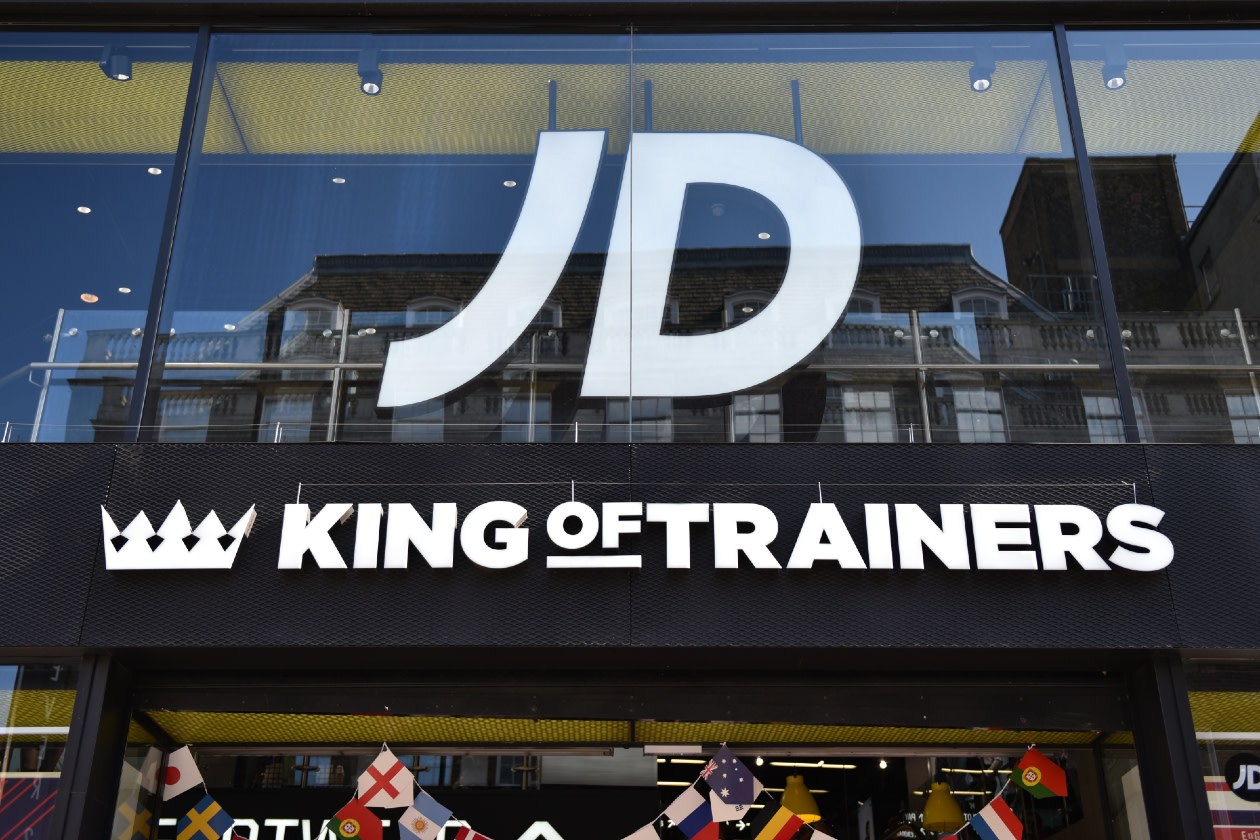In the nine weeks to 4 January, JD Sports like-for-like (LFL) revenue fell 1.5%, missing market expectations of 2.7% growth. The revenue decline was blamed on the “challenging and volatile” conditions, which led to increased promotional activity in the market.
Revenue growth in Europe and Asia Pacific was not enough to offset a poor performance across its core UK and US markets.
The recently acquired Hibbett traded slightly better than the wider North American business, and Courir (in France) “traded well” in the weeks following its acquisition.
LFL revenue is now expected to be flat this year. Full-year pre-tax profit guidance has also been lowered to between £915-935mn (previously £955-1,035mn). The group expects to finish the year with a small net debt position.
The shares fell 10.7% in early trading.
Our view
JD Sports’ like-for-like sales have declined over the nine weeks to 4 January 2025, despite a strong December and Christmas flurry. This caused the group to lower full-year profit guidance, which markets reacted negatively to on the day.
The sales decline comes as JD continues to hold firmer on pricing than competitors, who have leaned into more promotional activity to help clear stock. The company appears to be digging its heels in on this front, not wanting to engage in a fire sale of stock and tarnish its reputation as a more premium store.
While this helps protect margins a little, profits are still getting hurt. In the near term, the trading environment is likely to remain volatile. Management is particularly nervous about the outlook for the UK, seeing potential for higher unemployment and changes to National Insurance and minimum wages set to add around £30mn of additional costs.
Looking past this softness, there’s a lot to like structurally about the market that JD operates in. The global sports apparel market is huge – valued at $396bn in 2023 and expected to grow to $544bn by 2028.
To service all this demand, JD has continued to expand its footprint in America and Europe through acquisitions and new store openings. These stores' racks feature exclusive items from Nike and Adidas. JD is known for its strong brand relationships and is even Nike’s single largest partner globally. Offering these ‘JD Exclusives’ helps to lure customers into stores and boost market share.
The group’s sales mix by region is also better balanced than some of its biggest competitors, which helps smooth out bumps in the road if one market slows. And because the group sits at the premium end of the market, it typically has healthier margins than many of its peers too.
But JD Sports faces challenges. CEO Régis Schultz hasn’t shied away from ambitious expansion plans in North America and Europe. But this growth isn’t coming cheap, and the group now expects to finish the year with a small net debt position, so we’d like to see focus move to rebuilding its cash cushion again.
JD Sports' strategy execution is impressive and the growth opportunities are evident. But, with consumer sentiment and demand still uncertain, the company is taking a risk by expanding capacity ahead of market recovery.
The company’s valued at just 6.7 times forward earnings, significantly below its long-run average. This reflects recent disappointments and uncertainty surrounding the retail sector in the near term, so more ups and downs could lie ahead. But in the long term, we think the current valuation overlooks the company’s strong revenue and profit growth prospects.
Environmental, social and governance (ESG) risk
The retail industry is low/medium in terms of ESG risk but varies by subsector. Online retailers are the most exposed, as are companies based in the Asia-Pacific region. The growing demand for transparency and accountability means human rights and environmental risks within supply chains have become a key risk driver. The quality and safety of products as well as their impact on society and the environment are also important considerations.
According to Sustainalytics, JD Sports’ management of ESG risk is strong.
The group’s environmental policy is strong and executive remuneration is explicitly linked to sustainability performance targets. There is also an adequate whistleblower policy in place. However, ESG reporting and disclosures fall short of best practice.
JD Sports key facts
All ratios are sourced from Refinitiv, based on previous day’s closing values. Please remember yields are variable and not a reliable indicator of future income. Keep in mind key figures shouldn’t be looked at on their own – it’s important to understand the big picture.
This article is not advice or a recommendation to buy, sell or hold any investment.No view is given on the present or future value or price of any investment, and investors should form their own view on any proposed investment.This article has not been prepared in accordance with legal requirements designed to promote the independence of investment research and is considered a marketing communication.Non - independent research is not subject to FCA rules prohibiting dealing ahead of research, however HL has put controls in place(including dealing restrictions, physical and information barriers) to manage potential conflicts of interest presented by such dealing.Please see our full non - independent research disclosure for more information.


